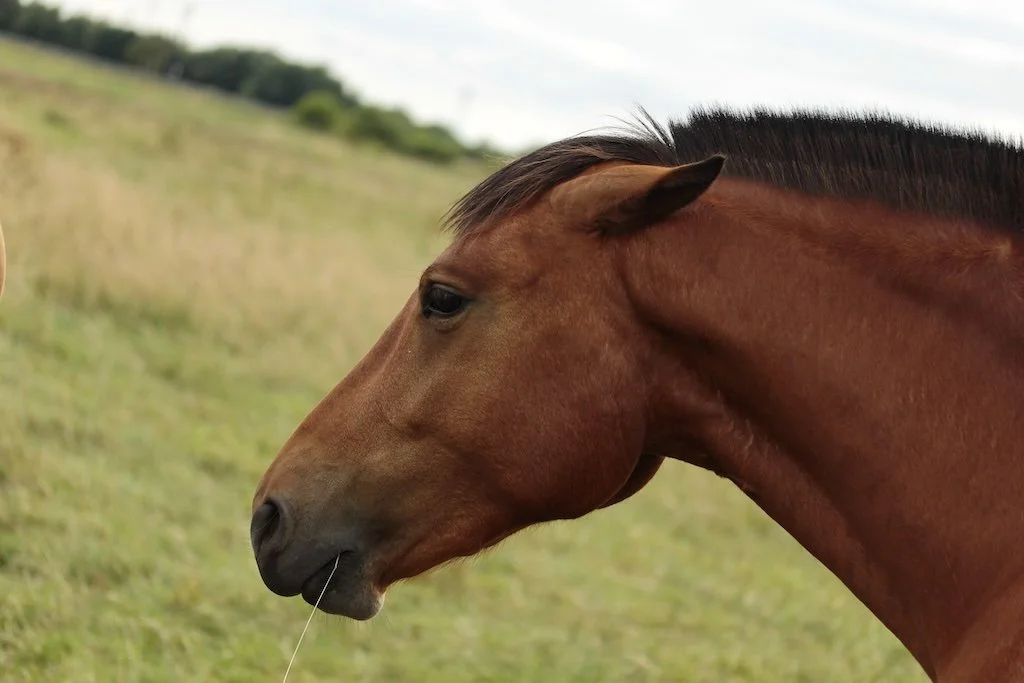How to address nociplastic pain
Nociplastic pain can be tricky to resolve. We can take some notes from human therapies, but we do need to adjust them to horses. Here are a few ideas on where to start.
A big focus with addressing nociplastic pain is stress management and improving mental well-being.
Last week we delved into the concept of nociplastic pain and how it differs from nociceptive and neuropathic pain. Essentially, nociplasitc pain is pain that persists, even though the tissue damage is not present. Often, nociceplastic pain starts of as nociceptive pain. There is tissue damage, the body’s alarm system goes off, pain prevents the horse from over using the injured part and eventually, healing can occur. But sometimes in this process the nerve signalling can become faulty, setting off the alarm system even though the tissue damage is no longer present. The pain persists despite there being no real injury. The nerve endings responsible for this can go even more haywire, signalling an alarm from stimuli that aren’t painful at all, like slight pressure, stretch or temperature change.
When this happens, things become tricky. We need to address this issue in a systematic and patient way. First, we need to acknowledge that the pain is real, even though there doesn’t seem to be a problem. Trying to force the horse into ignoring the pain or “riding him through it” is going to be counterproductive, especially because stress can make nociplastic pain worse - and what’s more stressful than being forced into doing something that hurts?
In humans, nociplastic pain therapy focuses on reducing general inflammation, appropriate bodywork modalities, desensitization, psychological therapies and pharmaceuticals. In horses, we can take the same model and tweak it a little bit. We can use gentle exercise and an appropriate diet to reduce overall inflammation. Low key movement does wonders for the body, so make sure the horse has access to free movement (preferably in a herd environment, if that’s something he’s ok with). Make sure he’s getting enough vitamins and minerals and that his diet comes as close to natural as possible. There are many herbs that have anti-inflammatory properties, so make sure to look into those too.
Regular bodywork, coupled with desensitization is another cornerstone of nociplastic pain recovery. With this kind of issue, gentler bodywork is more appropriate. Ideally, you want a therapist who has experience working with the nervous system. Bodywork should be geared towards making the horse comfortable in his body and calming down the overactive nervous system. The sessions can include gradually desensitizing the horse to stimuli that tend to cause pain by making the nervous system less reactive to them. Because this requires the horse to be relaxed and comfortable, doing it as a part of a bodywork session can be very beneficial.
Psychological therapies are obviously limited in horses, as we can’t talk to them. However, we can take steps towards improving their mental well-being. Reducing stress is a very important first step. Stress has a tendency to fuel whole body inflammation, so reducing chronic stress is beneficial for pretty much every aspect of health. Meditating with our horse can sound a little weird, but it can have a huge impact on their autonomic nervous system. It can facilitate a calmer state, bringing their breathing rate and their heart rate down, engaging the parasympathetic nervous system. Some horses can benefit from a little confidence boost. Teaching them tricks or tasks that are easy for them to master (and then praising them for it) can be a great way to give them a sense of achievement. While some of these things might seem like they have nothing to do with resolving pain issues, they can have a big impact. Never forget just how interconnected the body and the mind are. At the end of the day, nociplastic pain is a new kid on the block. We just don’t know a whole lot about it yet. What we do know is that resolving this kind of problem takes an individual approach, the cooperation between different healthcare professionals and most of all, it takes time and patience.
